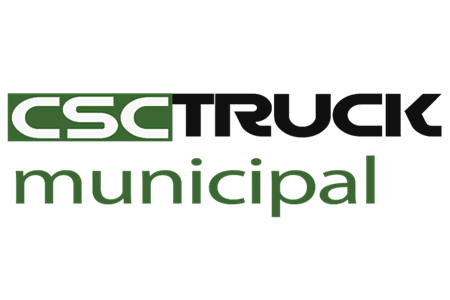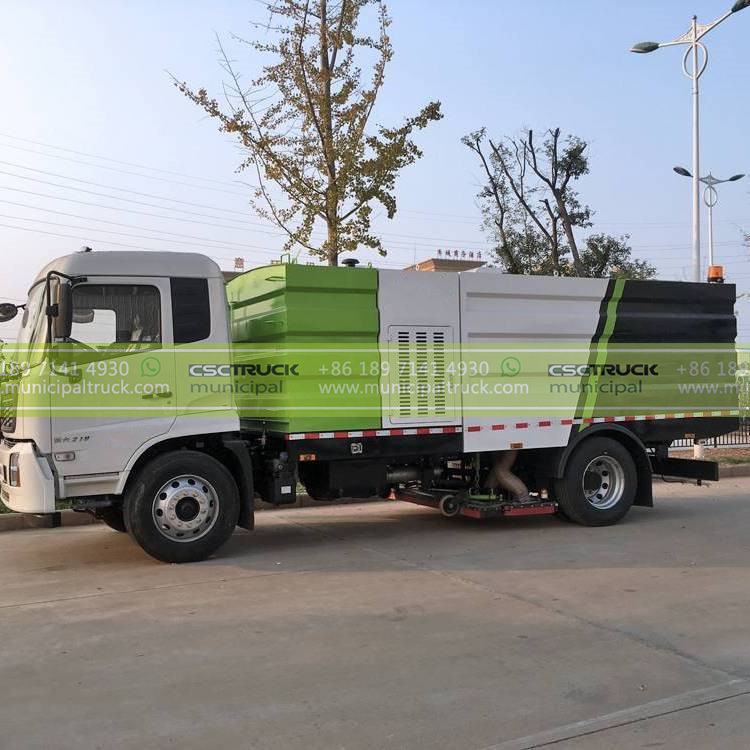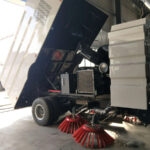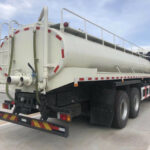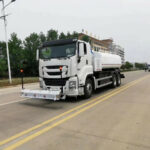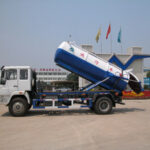In a decisive escalation against chronic smog emergencies, the Bangkok Metropolitan Administration (BMA) today commissioned 15 HEPA-filtration street sweeper trucks across the capital’s most pollution-burdened corridors. This $4.1 million technological intervention—executed through a performance-guaranteed alliance between CSCTRUCK Municipal Branch and Thailand’s leading environmental infrastructure provider Thai Environmental Solutions Group (TESG)—introduces medical-grade air scrubbing technology to combat the city’s hazardous PM2.5 concentrations, projected to reduce ambient particulate levels by 75% along primary arterials like Ratchadaphisek Road and Sukhumvit Boulevard during peak pollution episodes.
Part 1: Bangkok’s Atmospheric Emergency – The Health and Economic Imperative
Persistent smog events have transcended seasonal nuisance status to become a public health catastrophe demanding engineered countermeasures across Bangkok’s urban fabric.
- Respiratory Pandemic and Economic Paralysis:
Bangkok endures Southeast Asia’s third-worst annual PM2.5 averages (42 µg/m³), peaking at 189 µg/m³ during January inversion layers—a toxicity level triggering citywide school closures and $380 million in tourism cancellations annually. Chulalongkorn Hospital research confirms PM2.5-induced pediatric bronchitis cases increased 300% since 2020, with ultrafine metal particulates from brake abrasion penetrating residential towers up to the 30th floor. - Systemic Failures in Conventional Mitigation:
Traditional broom sweepers exacerbated airborne pollution by resuspending 60% of captured particles, while water-spraying trucks temporarily suppressed dust only to heighten humidity-induced ozone formation. The BMA’s 2024 pilot using modified vacuum trucks reduced ground-level particulates but lacked filtration for carcinogenic sub-1-micron particles permeating the urban canopy layer.
Part 2: Engineering Revolution – The HEPA Sweeper Ecosystem
CSCTRUCK’s custom-designed HD-12H trucks integrate three synergistic contamination control systems within a unified operational platform.
Multi-Stage Filtration Architecture
- Medical-Grade HEPA Encapsulation:
Sixteen cylindrical H14-grade filters arranged in parallel arrays capture 99.995% of particles ≥0.3 microns—including diesel soot and tire-wear nanoparticles—through interception, diffusion, and electrostatic sequestration mechanisms. This exceeds hospital surgery room standards, treating 32,000m³ of street-level air per operational hour. - Cyclonic Pre-Separation Technology:
Vortex generators separate bulk debris before air reaches HEPA membranes, extending filter lifespan to 450 operational hours despite Bangkok’s high-biomass waste streams. Real-time pressure sensors trigger automated filter regeneration cycles when resistance exceeds 200 pascals. - Negative-Ion Emission System:
Post-filtration air exits through roof-mounted diffusers charged with 5 million ions/cm³, neutralizing airborne pathogens and accelerating PM1.0 agglomeration for subsequent capture. This transforms sweepers from passive collectors into active air-purification nodes.
Part 3: AI-Driven Deployment and Operational Integration
The fleet operates within an intelligent urban management matrix leveraging predictive analytics and multi-asset coordination.
- Predictive Pollution Routing:
Onboard AI cross-references real-time data from 120 city air quality sensors, meteorological forecasts, and traffic flow patterns to dynamically prioritize streets where PM2.5 accumulation exceeds WHO thresholds. Vehicles autonomously adjust suction power and filtration intensity based on particulate density readings, conserving energy during lower-pollution intervals. - CSCTRUCK-TESG Performance Synergy:
Under a $15.2 million 5-year service agreement, CSCTRUCK Municipal Branch provides remote diagnostics via its Singapore Smart Cities Hub, while TESG leverages 14 local service centers for <2-hour mechanical response. Thai technicians received specialized training at CSCTRUCK’s Kuala Lumpur Air Quality Academy, mastering nanoparticle filtration protocols.
Part 4: Holistic Urban Contaminant Management Strategy
The HEPA sweepers anchor a multi-vector pollution control regime coordinating specialized municipal assets across Bangkok’s complex urban ecosystem.
- Spatial-Temporal Deployment Optimization:
Initial operations concentrate on ultra-fine particulate hotspots identified through atmospheric modeling: the Din Daeng traffic vortex, port-access routes near Khlong Toei Market, and school districts along Phahonyothin Road. Nightly operations from 22:00–05:00 maximize air quality impact before morning rush hours, with fleet availability monitored through BMA’s Integrated Command Center. - Multi-Asset Environmental Coordination:
The HEPA sweepers function as the primary airborne contaminant control layer within a synchronized mechanized hierarchy: Concurrently, garbage trucks equipped with hermetic compaction systems prevent organic waste decomposition gases from entering the atmospheric cycle, while regenerative-air vacuum trucks deep-clean pedestrian zones inaccessible to larger sweepers. This integrated approach replaces eight fragmented service contracts, projecting 40% operational cost savings while targeting full compliance with WHO air quality standards by Q3 2028.
This technological deployment positions Bangkok as ASEAN’s pioneer in engineered urban atmosphere remediation, transforming street cleaning from cosmetic maintenance into a scientifically validated public health safeguard through transnational technical partnerships and data-driven environmental governance.
